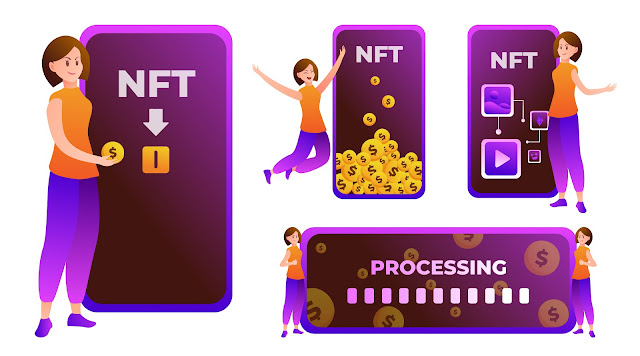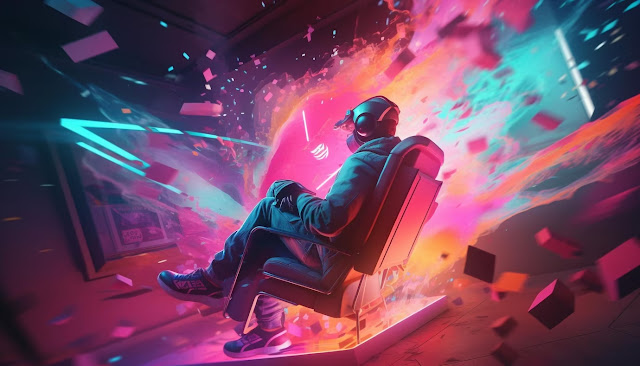Introduction
In an era of relentless digital innovation, a transformative technology has captured the world's attention – Non-Fungible Tokens, or NFTs. These unique digital assets, powered by blockchain technology, have revolutionized how we perceive ownership and authenticity in the digital realm. In this exhaustive guide, we embark on a comprehensive exploration of the intricate NFT universe, from its inception and mechanics to its real-world applications, challenges, and a glimpse into its promising future.
Storytelling
Meet Sarah, a young digital artist whose creative journey had been a rollercoaster ride of passion and frustration. She poured her heart and soul into her digital artwork but struggled to gain recognition. It was only when she ventured into the world of NFTs that her fortunes took a dramatic turn. One fateful day, she minted a unique piece of digital art as an NFT, titled "Ethereal Dreams." Little did she know that this would change her life forever.
1: Unpacking the World of NFTs
Non-Fungible Tokens, or NFTs, are the cornerstone of a digital revolution that has upended the traditional notions of ownership in the digital realm. Unlike cryptocurrencies such as Bitcoin or Ethereum, NFTs are indivisible and represent unique, one-of-a-kind digital items, making them ideal for validating ownership of digital art, collectibles, virtual properties, and more.
Case Study:
Sarah's "Ethereal Dreams" NFT was auctioned on a popular NFT marketplace. The bidding war that ensued took the art world by storm, ultimately selling for a staggering $1.8 million. This was not just a sale; it was a historic moment in the world of digital art, marking a pivotal moment in the history of digital creativity.
2: The Intricate Mechanics of NFTs
To grasp NFTs fully, we must delve into the underpinning blockchain technology. NFTs are built on blockchain networks like Ethereum, employing smart contracts to establish uniqueness and traceability for each token. When an NFT is minted, its existence is indelibly recorded on the blockchain, ensuring transparency and security.
2.1. Blockchain Technology: The Foundation of NFTs
Blockchain technology serves as the bedrock of NFTs, providing the infrastructure for their creation and management. It's a decentralized ledger that records every NFT transaction, guaranteeing transparency and security.
Blockchain's decentralized nature means that no single entity has control over the network, making it resistant to censorship and fraud. This fundamental characteristic ensures the trustworthiness of NFT transactions.
2.2. Smart Contracts: The Brains Behind NFTs
Smart contracts are autonomous, self-executing agreements encoded on the blockchain. In the context of NFTs, these contracts define the rules and properties of each token. They dictate whether an NFT can be resold, provide royalties to creators upon secondary sales, and ensure the uniqueness of each NFT.
When an NFT is minted, a smart contract is deployed, embedding the token with its attributes and rules. This includes information about the creator, ownership history, and any associated royalties.
2.3. Minting NFTs: From Creation to Ownership
The process of minting an NFT is the gateway to its existence. It involves creating a unique token and recording it on the blockchain. This process establishes an NFT's authenticity and provenance, ensuring that it can be owned and traded as a digital asset.
Minting typically involves using NFT marketplaces or platforms specifically designed for this purpose. Artists and creators mint their digital creations, whether it's artwork, music, virtual real estate, or collectibles, by providing essential information about the item, such as its title, description, and any associated files.
NFT Marketplaces: NFTs are primarily bought, sold, and traded on various NFT marketplaces. Here are some notable NFT marketplaces:
- NFTproX: An emerging NFT marketplace known for its user-friendly interface and diverse range of NFT categories.
- OpenSea: One of the largest and most popular NFT marketplaces, offering a wide variety of digital assets, from art to virtual real estate.
- Binance NFT: Binance's NFT platform, provides a seamless connection between the crypto exchange and the NFT world.
- SuperRare: Focused on digital art, SuperRare is renowned for hosting exclusive, high-value NFT auctions.
- Nifty Gateway: Known for its unique "drops" and innovative NFT experiences, Nifty Gateway has gained a strong following in the NFT community.
- Rarible: A decentralized NFT marketplace that empowers users to create, buy, and sell NFTs.
- Paddle8: Combining traditional and digital art, Paddle8 is a bridge between the art world and the NFT space.
- Sotheby's: The renowned auction house has ventured into the NFT world, hosting high-profile NFT auctions and sales.
3: NFTs in Action: Real-World Applications
Case Study:
4: Navigating Challenges and Controversies
4.1. Environmental Concerns: The Carbon Footprint of NFTs
One of the most prominent criticisms of NFTs revolves around their environmental impact. Many blockchain networks, including Ethereum, use a proof-of-work consensus mechanism that consumes substantial amounts of energy. This has led to concerns about the carbon footprint of NFT transactions and their contribution to climate change.
Research shows that the energy consumption of NFTs can be significant,
especially during periods of high activity on the blockchain. It's
important to consider these environmental implications while enjoying
the benefits of NFTs.
4.2. Copyright and Intellectual Property Challenges
NFTs have raised complex questions regarding copyright and intellectual property rights. When artists and creators mint NFTs, they often include digital files of their work. This has sparked disputes over who holds the rights to these files and how they can be used.
Legal frameworks for NFTs are still evolving, and artists, collectors,
and platforms are navigating uncharted territory. Copyright challenges
remain a significant area of concern within the NFT ecosystem.
4.3. Market Speculation and Bubble Concerns
The rapid rise in NFT prices has led to concerns about market speculation and the potential for a bubble. Some view NFTs as speculative assets rather than genuine expressions of value in the digital realm.
Market speculation can result in extreme price volatility, making it
challenging for artists, collectors, and investors to predict the
long-term value of NFTs. Navigating these uncertainties is an ongoing
challenge within the NFT market.
5: Envisioning the Boundless Future of NFTs
Storytelling:
5.1. NFTs in Virtual Reality: Bridging the Physical and Digital Worlds
5.2. Decentralized Finance (DeFi) and NFTs: A Symbiotic Relationship
DeFi protocols are expanding the utility of NFTs by allowing them to be used as collateral or assets in decentralized lending and borrowing platforms. This integration opens up new financial possibilities for NFT holders.
As DeFi continues to grow, the synergy between DeFi and NFTs is
expected to reshape the financial landscape, providing unique
opportunities for asset utilization and liquidity.






